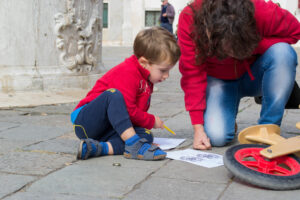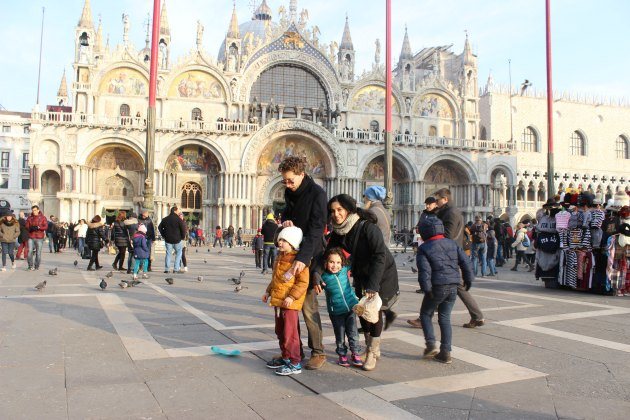One of the beautiful sides of every experience – whether or not it includes traveling – is the number of indelible memories we collect… have you ever thought about it? Of course, there are some images that get imprinted in our minds, but most of all we treasure a number of feelings, both positive and negative, connected to all of our 5 senses!
This is the value of our experience. If we are receptive to the world around us, we also encourage our children to be attentive; to listen carefully, maybe closing their eyes; to taste every bite of a new dish; to smell scents and perfumes; to touch what they find around them; and, of course, look at the world with eyes wide open.

It is true that every city can be explored with a multisensorial approach, but Venice is particularly rich from this point of view. Those of you who live away from the sea will immediately notice, as soon as you will arrive in Venice, that together with the hundreds of voices of people in the streets, there is the constant melody of the water. Water is the element of Venice we can perceive with all of our senses, including our nose: you can smell the saltiness of the air, sometimes fainter and sometimes stronger –some days, even pungent.
How then can you take advantage of the potential of Venice to create some fun activities for children that would turn the visit into an amazing experience?
To start, we suggest setting up a designated area: a space that would let children wonder without the risk of getting lost. We can suggest one of the many “campielli” of Venice. The best would be to avoid the bigger and more crowded ones, so find a space that is perfectly sized for your young travellers. For example, Campo San Giacomo, Campiello Pisani, Campo dei Miracoli, Campo dei Mori, and many more!
Very important: remember to bring something like a blindfold or a handkerchief to cover your children’s eyes. Here’s where the multisensorial exploration begins… in the dark!
How to do it? Try following these few steps:
– Be your children’s seeing-eye in the dark! Guide them towards the different things to touch and explore. Distinguish different walls, protrusion, wells, decorations on houses’ facades or on door knobs…
– Try getting your children to guess what each object is and describe it with them using as many adjectives as possible! Think of the material, the consistency, the temperature, and so on…
– Move around following smells and noises! Help your children to point out some spots, for example the canal on their right, the bakery on the other side, the leather shop somewhere else…
– At the end, go back to your starting point and remove the blindfold. With paper and pencils try to draw a “multisensorial map” together!





